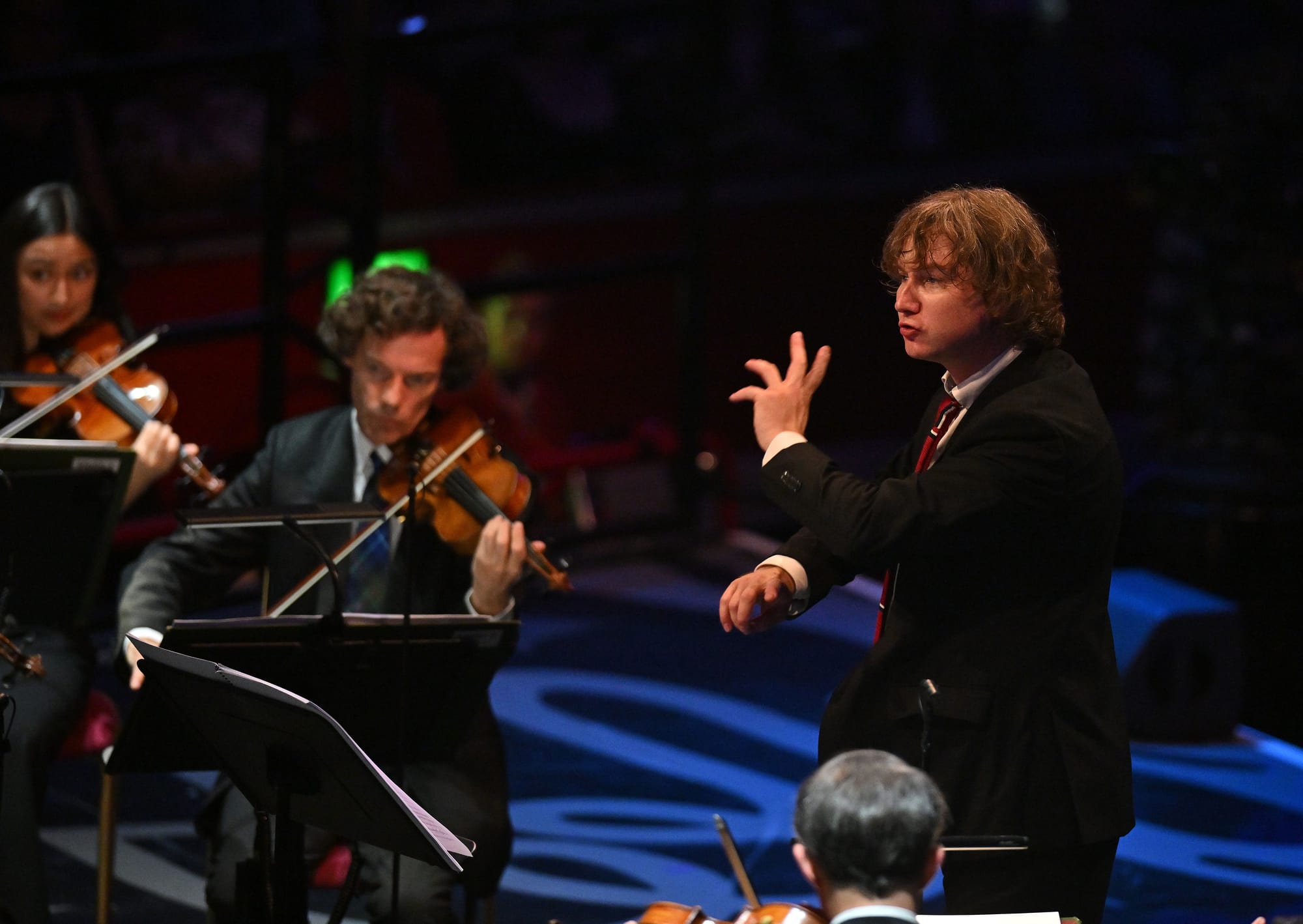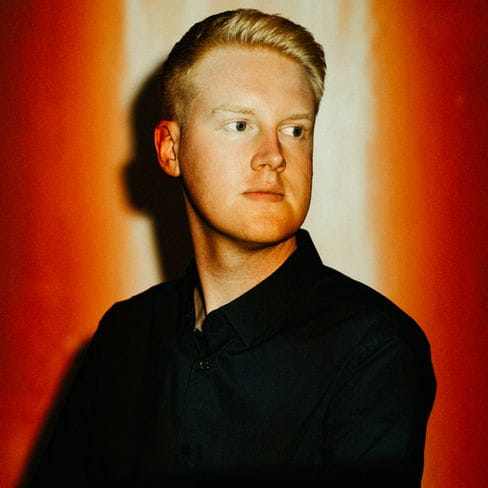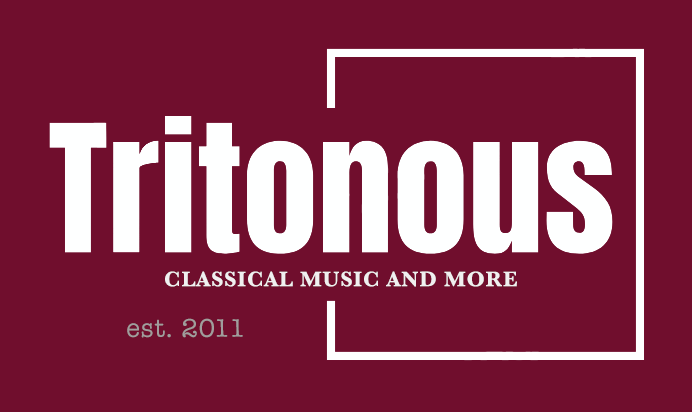
Beethoven’s Fifth: Rameau, Saint-Saêns, Capperauld, Beethoven Alexandre Kantorow (piano); Scottish Chamber Orchestra / Maxim Emelyanychev (conductor/drum). Royal Albert Hall, London, 25.07.2025
Rameau Les Indes galantes (1735), Suite
Saint-Saëns Piano Concerto No. 5 in F, Op. 103, ‘L’Égyptien’ (1896)
Capperauld Bruckner’s Skull (2024, World Premiere of full orchestra version)
Beethoven Symphony No. 5 in C minor, Op 67 (1807/08)
Another unnumbered Prom, another “Adventure in Classical’ . One that defied expectations: how would Rameau feel in the cavernous Albert Hall? And, another Beethoven Fifth?
Rameau’s opéra-ballet Les Indes galantes was staged in Paris in 1735. Maxim Emlyanychev has juxtaposed Rameau with Saint-Saëns; in a recorded in interview, he states that there is a connnecting “spirit” (sometimes, Oriental, sometimes Middle Eastern). It is Emelyanychev himself that has put together this suite, beginning with the ‘Entrée des quatres Nations dans la court d’Hébé,’ which in the original takes place in the Prologue snuggling between the initial ‘Air d’Hébé,’ ‘Vois qui d’Hébé suivez les lois,’ and another (livelier) ai for Hébé, ‘Amants, sûrs de plaire’. In between, the representatives of France, Spain, Italy and Poland arrive at the court of Hebe (Goddess of youth and cup-bearer to the Gods of Mount Olympus). Emelyanycev’s way was gentle, a harpsichord (Jan Waterfield) rustling in the background. Strange to see four double-basses lined up above the rest of the tutti, but the balance was well done, as were dynamic contrasts between phases.
Far livelier was the pair of Rigaudons, light as a feather, if not absolutely 100% together always in the contrasting scamperings. The full title is ‘Rigaudons pour les Matelots provençaux et les Matelots provençales’ (balanced, in the original wok, by a pair of’ Tambourins’). The movement identified here as ‘Air gracieux pour les Amours,’ sometimes seen just as ‘Air pour les Amours,’ was lovingly sculpted, a pair of pastoral oboes underpinned by bassoon perhaps invoking an Arcadian landscape. A hint of portamento in the first violins raised an eyebrow, and perhaps the tempo was a touch too relaxed: the sense of graceful dance held on by a whisker. Nice to see Emelyanychev toting a drum himself for the ‘Danse du grand calumet de paix’ (Dance of the Grand Peace-Pipe), from the ‘Les Sauvages’ section of Rameau’s work). From the first ‘Entrée,’ ‘Les Incas du Pérou,’ came the brief ’Adoration du Soleil’, music of surpassing beauty, the overlapping entries as if the sun’s rays are finding their way over the horizon at dawn for this Sun Festival. Unsurprisingly, ‘radiant’ seems the mot juste. It is quite right, too, to finish as Rameau himself did, with a Chaconne, and a grand one at that. Contrasts abound, perhaps a touch blunted here (brass used natural instruments). That said, the double-basses chthonic grounding at one point seemed perfect. We have come a long way from Felix Mottl’s arrangement of dances from Platée and Les fêtes d’Hébé programmed by Sir Henry Wood in 1896. Les Indes galantes arrived at the Proms in full via Ton Koopman and the Amsterdam Baroque Orchestra in 1987, and it is good to see the lineage continued here.
We’ve also come a long way recently, too; I tried some Rameau (Les six concerts en sextuor) in Paillard’s 1962 recording with his chamber orchestra, and it is like entering another dim-lit age. Although I used the Warner box of French Baroque Music, here it is via a YouTube, in all of its grand heaviness:
Saint-Saëns’ Piano Concertos, like so much of his output, do not get the credit they deserve, so it was good to hear the ‘Egyptian’ Concerto. Stephen Hough did the works sterling service in his Hyperion traversal of all five, of course, and here we had the young Alexandre Kantorow (a pianist I’ve seen compared to Youri Egorov, high praise indeed). Kantorow has recorded the Saint-Saëns concertos for BIS with the Tapiola Sinfonietta. What’s interesting about those recordings is that the conductor is Kantorow’s father, Jean-Jacques Kantorow. Here, with Maxim Emelyanychev in repertoire more modern than I had previously heard that conductor (although the second part of the concert blew that idea out of the water) the result was an orchestral component of gossamer lightness. It was Kantorow’s playing that held the true colour, though, his touch varied, his fluency perfect for Saint-Saëns demands for legerdemain. The first movement had perfect ebb and flow. There was such rapport between pianist and conductor; and Kantorow knows exactly how much to open out when Saint-Saëns’ lines move into the definably Romantic.
The Andante second movement places the piece firmly in Egypt, and includes a Nubian love song in its materials; but it was the tightness of Kantorow’s decorations that was so memorable. Fantasy, too, was a defining aspect of this movement, with the music at times evaporating upwards only to land on Earth with a firmly, perfectly placed chord. Kantorow’s contribution oozed character. In the finale, Saint-Saëns’ character came out (the sparkling, impossibly fast delivery came easily to him: there are recordings from the early 1900s). This was a fabulous performance of a piece we should hear far more often: there was a gap between 1918 and 2011 in which this piece was not performed at all at the Proms! One encore: ‘Mon Coeur s’oeuvre à ta voix’ from Samson et Dalila.
Here’s the third movement in the BIS recording:

The concert spanned nearly 300 years of music. At one extreme was Rameau (1735); at the other was a piece by Jay Capperauld, born 1989. The Radio 3 interval talk was fascinating, a discussion with Capperauld and Carla Valentine, a mortician.
My previous experience of Capperauld was via the much-missed Psappha and their ‘Composing for …’ series, that one for piano and percussion. I was lucky enough to attend the recording sessions in Manchester for some of this series, and there was much fabulous talent on display. Capperauld’s Erratics can be heard below, including an introduction by the composer. The filming itself is expert; this is definitely worth a watch:
Bruckner’s Skull (2024) is a ’death-mask homage’ to Bruckner (whose 200th birth anniversary we celebrate this year). Death masks had a real impact in the 19th century, but also here they are related to Bruckner’s own interest in skulls and his obsession with death. There are occasions in which Bruckner ‘cradled the skulls of Schubert and Beethoven (when those bodies were exhumed and moved to Vienna’s Central Cemetary). It is entirely possible Bruckner had what we would now call OCD, which links into Capperauld’s own musical style: repetition is very much used here, while also incorporating quotes from Schubert (unsurprisingly ‘Death and the Maiden’) and Beethoven’s Op. 131 (both composers’ 14th Quartets, and also Schubert asked for Op. 131 to be played at his deathbed). The intermission interview quotes excerpts from both Schubert and Capperauld, so the quotation becomes obvious (perhaps the audience should have been given headsets, as if they were entering an exhibition, so they, too, could hear this in advance). Intriguingly, Bruckner commissioned a photograph of his mother after she had died, which became, allegedly, the only photograph he had of her. Copperauld states his piece is a ‘psychological musical exploration of the great composer’s character and the stories that surround his life, death, passions and obsessions’. The quotations are used in a manner as if to portray the inner workings of an OCD mind.
So, what does it sound like? Often, and I mean this more as a compliment to Capperauld than to anyone else, like good John Adams. There is obsessive repetition, but it is not quite Minimalist: the score has too much direction for that. The astonishingly metallic violins of the opening could be in a horror soundtrack, but not so the woodwind gestures that follow. Ominous double-bass crescendos against tick-tocking woodwinds suggest a highly layered approach. There is the odd Brucknerian tinge too, but the Beethoven and Schubert are heard as if through a fairground mirror (or perhaps through a glass, darkly). In this way, they struggle to be themselves again; they are forever altered. Capperauld’s harmonic virtuosity is significant: he can make passages glow through harmonic manipulation (and via scoring). No faulting the performance by the Scottish Chamber Orchestra, expertly guided by Emelyanychev.
The piece was impressive enough in the Albert Hall, but I have to say my respect deepened on every subsequent hearing through BBC Sounds. This was the World Premiere of the full orchestral version; a smaller chamber version was premiered by these forces in Easterbrooke Hall, Dumfries, on February 19, 2025. Bruckner’s Skull confirms in my mind that Capperauld will be a significant force going forwards.
And so to what, ostensibly, the concert is all about. It is, after all, called ”Beethoven’s Fifth’. Emelyanychev led a remarkable performance, not waiting for the audience to settle but straight in to the famous opening. Back to natural horns for this, and no/low vibrato on strigs (although with some portamento). The exposition repeat was observed i(t gives us a few bars that go under the radar otherwise, and, especially at speed, leads to a satisfying structure). The momentum was huge, the whole charged, the return to the opening electrifying.
The Andante con moto was certainly ’con moto,’ too, but eloquent from the lower strings particularly. Details of scoring kept on revealing themselves, particularly from the woodwinds: a special mention for the SCO’s bassoonist Cerys Ambrose-Evans, for her eloquence. I do wonder if a decoration on trumpet was that, both in concert hall and in broadcast relay; added decorations can, I’m afraid, sometimes masquerade as splits, or vice versa.
The Scherzo hurled forwards, horn-led (raucous, brazen natural horns). Perhaps there could have been more mystery to the transition to the finale (the timpani were not quite as dominant in the hall as in the broadcast), but the finale proper was a blaze of light. It was fast, again, which led to te question of what to do with the coda. Go faster, would seem to be the answer, and punch the accents. The result was fast, but not headlong, the last chord ’placed’ with just the smallest comma, a micro-Luftpause.
Certainly, this was energising Beethoven. And the Rameau was fun; but it was the Saint-Saëns and, especially, the Capperauld that made the trip across London to South Kensington worthwhile.
The concert, including the interval talk referenced above, can be found t the time of writing on BBC Sounds here. The BIS release of Concertos 3-5 with the Kantorows is available on Amazon here.











